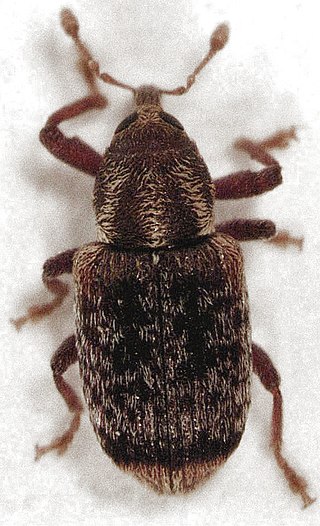
Peristoreus is a weevil genus native to New Zealand. This genus was first described in 1877 by Theodor Franz Wilhelm Kirsch.
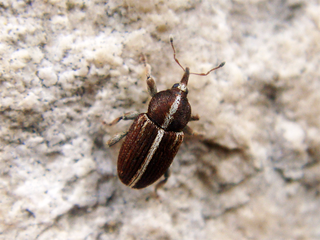
The beetle subfamily Curculioninae is part of the weevil family Curculionidae. It contains over 23,500 described species in 2,200 genera, and is therefore the largest weevil subfamily. Given that the beetle order (Coleoptera) contains about one-quarter of all known organisms, the Curculioninae represent one of the – if not the – most successful radiations of terrestrial Metazoa.
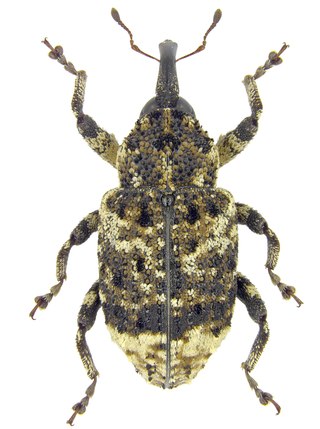
Cryptorhynchinae is a large subfamily of weevils (Curculionidae), with some 6000 species. They are found in most zoogeographic regions although they are most diverse in the Neotropics, Australia and Oceania.
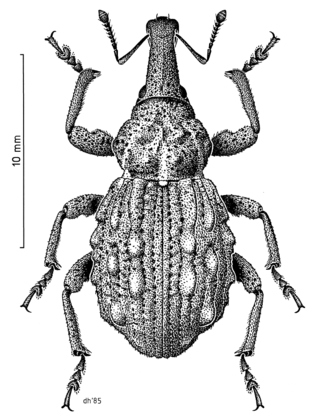
Hadramphus tuberculatus is a rare weevil endemic to Canterbury in the South Island of New Zealand. It was thought to be extinct in 1922 but was rediscovered in 2004.
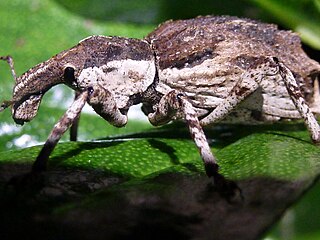
Anagotus stephenensis, commonly known as the ngaio weevil, is a large flightless weevil that is only found on Stephens Island in New Zealand. The ngaio weevil was discovered in 1916 by A.C. O'Connor on Stephens Island. Thomas Broun described it in 1921 as Phaeophanus oconnori after its collector. The weevils were observed at the time to be 'feeding on tall fescue and the leaves of trees'.

Anagotus fairburni or Flax weevil is a large flightless weevil. It feeds on leaves of New Zealand flax species where it produces a characteristic feeding notch. It is found on islands and in alpine areas of New Zealand.
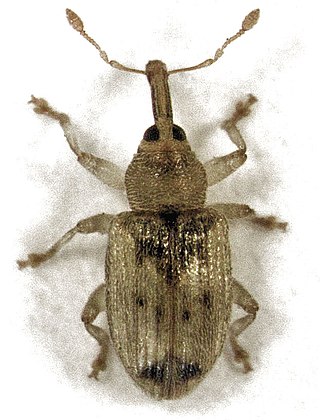
Peristoreus stramineus is a species of true weevil. It is endemic to New Zealand. The larvae develop in flower buds of Hoheria populnea.

Peristoreus fulvus is a species of true weevil. It is endemic to New Zealand. It is associated with plants of the genus Muehlenbeckia.
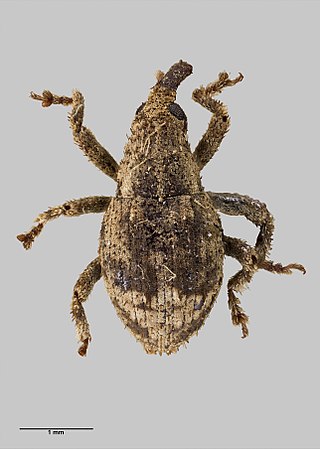
Didymus is a genus of beetles known as weevils. The genus contains the following species:

Turbott's weevil is a weevil that is endemic to New Zealand. It has been found on the Hen and Chicken Islands, the Poor Knights Islands and the Three Kings Islands.
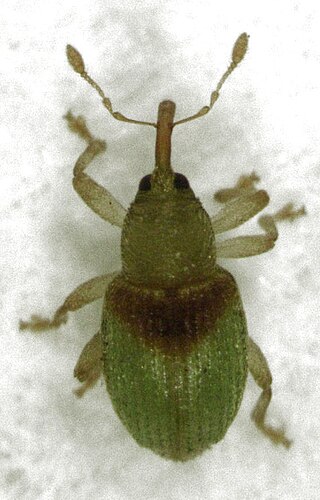
Peristoreus viridipennis is a species of true weevil. It is endemic to New Zealand. It is associated with plants of the genus Muehlenbeckia.

Didymus metrosideri is an endemic weevil from the Kermadec Islands in New Zealand. This species was discovered by W. L. Wallace during the 1908 Kermedec Islands expedition.

Hadramphus spinipennis, commonly called the coxella weevil, is a large, nocturnal, flightless weevil only found on Mangere and Rangatira Islands in the Chatham Islands, New Zealand.

Lyperobius huttoni is a New Zealand weevil found in alpine areas of the South Island and at sea level around the Wellington coast. It feeds only on speargrass (Aciphylla). Weevils from the endangered Wellington population have been translocated to predator-free Mana Island.

Lyperobius is a weevil genus in the subfamily Molytinae. Most Lyperobius species live in sub-alpine and alpine grassland, feeding on members of the family Apiaceae. Adults are active by day and feed on flowers, seeds, leaves and stems of the host plant. Larvae are found in the thick roots, rhizomes and soil surrounding the root system. All members of this genus are endemic to New Zealand. With the exception of L. huttoni and L. nesidiotes, all species are only found on the South Island.

Lyperobius hudsoni is a flightless weevil found in alpine areas of Central Otago and Otago Lakes in the South Island of New Zealand.

Lyperobius clarkei is a flightless weevil found in alpine areas of Buller and Nelson in the South Island of New Zealand.

Brachyolus is a genus of broad-nosed weevil in the family Curculionidae.

Hadramphus stilbocarpae, commonly known as the knobbled weevil, is a species of weevil in the family Curculionidae. Endemic to New Zealand, it was first described by Guillermo Kuschel in 1971.

Hadramphus pittospori, is a species of weevil in the family Curculionidae. Endemic to New Zealand, it was first described by Guillermo Kuschel in 1987.



















